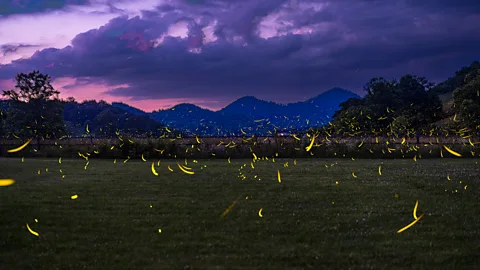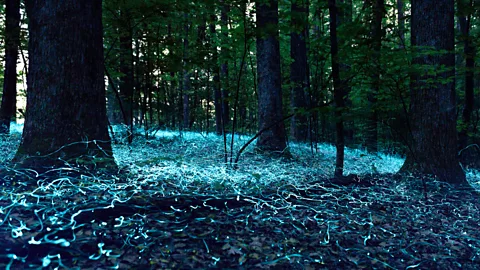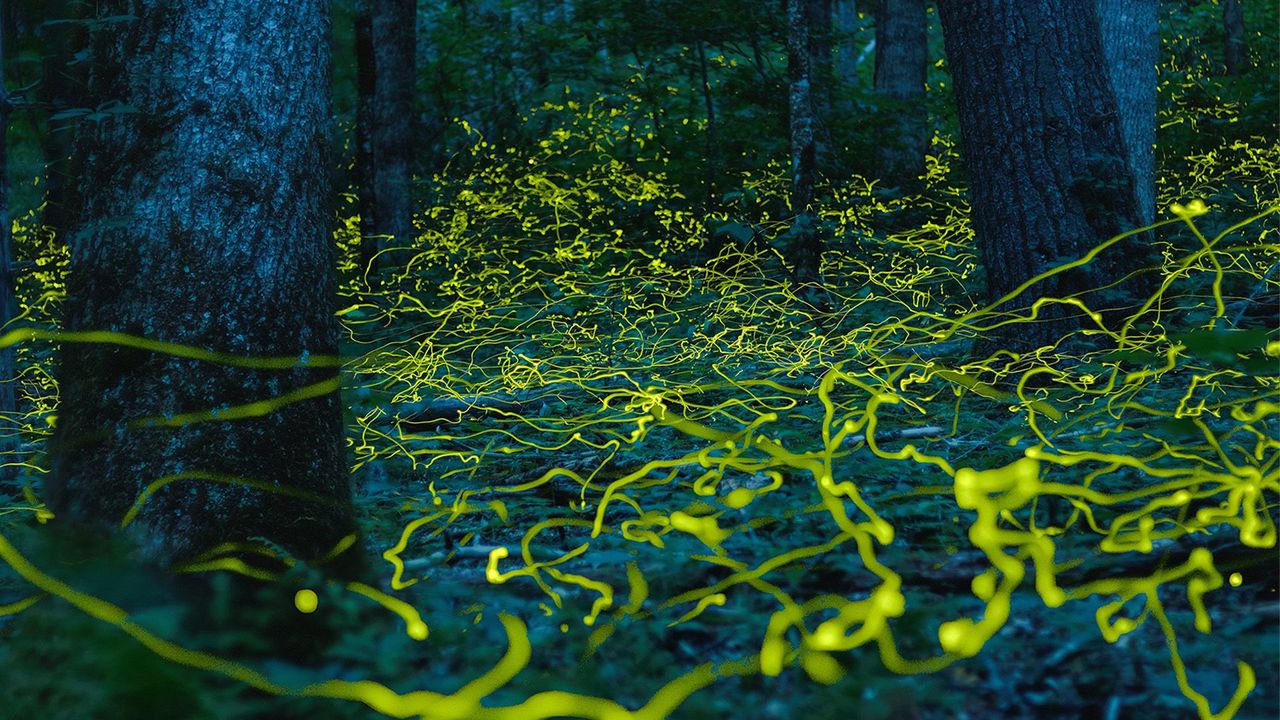Asheville, North Carolina, has long enchanted visitors with its creative spirit and natural wonders. But eight months after Hurricane Helene devastated the region, the city is leaning on some of its smallest, rarest residents—mysterious glowing “blue ghost” fireflies—to reignite tourism and community morale. Locals are hopeful that firefly season can help illuminate the way forward.
A magical return to the forest
Each spring, the forests of western North Carolina come alive with quiet, flickering light. From mid-May through mid-June, in the darkness of Pisgah National Forest, DuPont State Forest, and other Appalachian woodlands, rare blue ghost fireflies (Phausis reticulata) emerge for their short but dazzling mating season. Unlike the more common backyard fireflies with their blinking green signals, blue ghosts emit a steady, ethereal blue glow that glides low along the forest floor.
These luminous beetles, found only in the Southern Appalachian region, have long fascinated scientists and enchanted tourists. Each year, thousands of visitors descend on Asheville—a vibrant arts hub nestled in the mountains—to witness their otherworldly display. But this year, their light carries deeper significance.

In September 2024, Hurricane Helene tore through North Carolina, bringing catastrophic flooding and widespread destruction. In Asheville and surrounding communities, homes, businesses, and infrastructure were left reeling. Though the city officially reopened by year’s end, tourism—the lifeblood of many small local enterprises—has struggled to rebound. Now, with firefly season in full glow, residents hope that these tiny lights can guide travelers back to the region.
Fireflies and fragile ecosystems
There are more than 2,400 species of fireflies across the globe, but blue ghosts are among the rarest—and most delicate. Unlike the charismatic synchronous fireflies that flash in unison, blue ghosts glow continuously, sometimes for over a minute. Their understated performance requires absolute darkness to appreciate fully. Even the faint light from a mobile phone screen can cause them to disappear. “They’re super sensitive to light,” said Nicolle Will of Asheville Wellness Tours, which offers guided forest experiences that combine firefly viewing with mindfulness practices. “If your phone lights up, they vanish. They’re not like backyard fireflies who don’t mind porch lights.”

Will and others note that this year, tour bookings came late. Normally sold out well in advance, many firefly-viewing tours were still available into May—a clear sign of the downturn in visitors. “We were still down 70% when we reopened in November,” Will said. “That kind of recovery takes time.”
Still, the fireflies themselves seem largely unaffected by the storm. According to Jennifer Frick-Ruppert, a biologist and naturalist at Brevard College, natural disturbances like floods or fallen trees are part of the Appalachian ecosystem’s long evolutionary history. “The forest can handle that,” she said. “It’s when the forest is removed completely—that’s when the fireflies disappear.”
Guardians of the glow
Because of their sensitivity, responsible firefly tourism has become critical. The National Park Service now regulates firefly access through viewing lotteries at places like Great Smoky Mountains National Park and Congaree National Park. Smaller, private tours offer alternatives in Pisgah and surrounding areas, often led by naturalists who share both firefly lore and environmental education.
Respectful firefly viewing means no flash photography, staying on trails, and avoiding insect repellent that might harm the beetles. It also means resisting the urge to catch them—a nostalgic but damaging habit. “These fireflies live and lay eggs in the leaf litter,” said Frick-Ruppert. “Stepping off trails can destroy their habitat or kill juveniles.”

Despite their dreamy glow, fireflies are not as fragile as they seem. Blue ghosts, like many fireflies, are predatory in their larval stage, preying on smaller insects and larvae beneath the forest floor. “They’re like little sharks in the leaf litter,” Frick-Ruppert said with a laugh. But human-caused threats are harder to fend off. Habitat loss, pesticides, and light pollution have caused firefly populations to decline across the U.S. That’s why, Will emphasized, choosing a guided tour supports both ecological preservation and the communities still rebuilding.
A glowing path forward
While many travelers come to see the fireflies, what they leave with often runs deeper than a memory or photograph. For locals like Will, firefly season is a time of renewal—not just for the forest, but for Asheville itself. “It’s a huge morale boost to have people back,” she said. “Almost everywhere you go here, you’re supporting someone who’s been through this tough year. Whether it’s the guide taking you into the woods or the cafe owner where you get your morning coffee, these are real people who are still recovering.”
As the fireflies float through the forest each night, their soft glow does more than dazzle. It reminds visitors—and residents—of the resilience woven into both the land and its people. In the darkened woods of North Carolina, hope glimmers, one tiny light at a time.
If you go: Firefly etiquette and trip tips
Plan ahead:
Peak viewing happens from late May to mid-June. Some tours sell out months in advance. Consider guided tours from local organizations like Asheville Wellness Tours or Brevard-based ecotour companies for a meaningful and respectful experience.
Pack smart:
Use red-light filters on torches, wear dark clothing, and bring bug protection that won’t harm fireflies. Avoid using your phone unless absolutely necessary.
Stay on trail:
Firefly habitats are fragile. Don’t walk on forest litter or try to catch the beetles.
Support local:
Choose locally owned restaurants, guides, and accommodations. Your visit can make a direct difference in rebuilding Asheville’s economy.
In a time of rebuilding, Asheville’s tiniest residents are helping shine the way. Fireflies have always sparked wonder—but now, they just might inspire something more.





